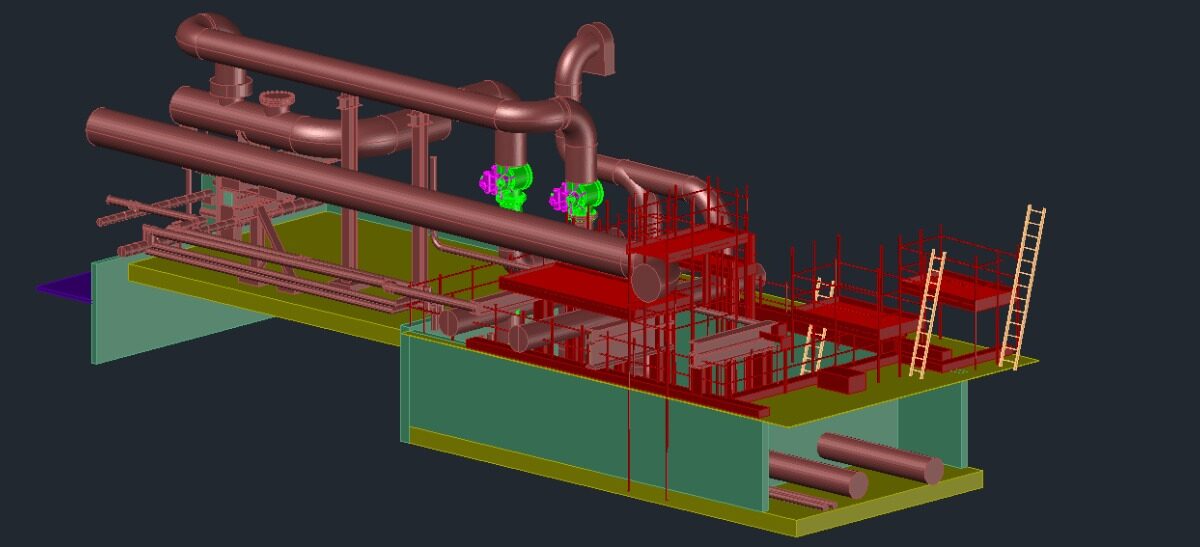Point cloud to BIM services is one of the best tools to implement on renovation projects. Design development is a detailed driven process in construction and often renovation projects require special attention for design development. Point cloud scans represent minute architectural, structural and MEP details of a building that are useful for redesigning and 3d modeling.
Point cloud data is captured using advanced devices such as Leica, Faro etc. Many construction professionals hire laser scanning experts for scanning the built asset. Point cloud to BIM is commonly used by construction and design consulting companies that do renovation and rebuilt projects.
Often the companies have the in-house capabilities for point cloud modeling, however many times they hire laser scanning professionals and point cloud to BIM consulting companies to fulfil their project needs.
The point clouds are offered in a variety of forms, including e57,.RCS,.RCP. This article discusses the applications, software, methodologies and advantages of outsourcing point cloud to BIM services to third party consultants.
Equipment and Software required for effective Point Cloud to BIM Implementation
Modern software and techniques are used for a successful deployment of the point cloud to BIM process. The building is scanned by devices such as Leica, Faro, Reigl, etc. The finished 3d point clouds vividly display the structural, MEP, and architectural components and resemble an x-ray of a created asset.
To redesign and model the design aspects, these 3d point clouds can be imported into a variety of different software programs. Common point cloud modelling and design software for architectural, structural, and mep design includes: Revit, AutoCAD and Recap Pro.
Significance of using point cloud to BIM services for construction professionals
The management of projects and designs as a whole can benefit greatly from services for BIM point cloud modeling. Architects, civil engineers, MEP engineers, and construction managers are among the project stakeholders who commonly require and use point cloud modelling.
By transferring the point cloud data into an editable piece of software, these construction industry pros analyze the existing design and create a new one.

Mentioned below are some points demonstrating the significance of using Point cloud to BIM services on projects by construction professionals:
1- Using the point cloud data to develop usable CAD drawings and 3d Revit models
2- Capturing and reviewing minute details of the existing building that is useful for redesigning and facilities management
3- Try multiple designs ideas on the 3d model and CAD designs, developed using point cloud data, before short-listing the final design
4- Avoiding additional costs and hassle of hiring a building surveyor and architect to capture critical building data
Process of point cloud to BIM services
Step 1 – Laser scanning of a built asset for creating point clouds
The first and most crucial step in the Point Cloud to BIM conversion process is laser scanning. Numerous businesses have built-in point cloud capabilities. However, the majority of the time, professionals and construction firms will use a drone pilot with laser scanning expertise. These point clouds are high-quality photographs that give precise details about a building’s inner and exterior structure.
Step 2 – Assembling and processing point cloud data
Typically, point clouds that provide a thorough overview of building structural components are collected from several locations. Using software like Recap Pro, these point clouds are combined to form a single mesh. The 3D BIM modeling program Revit can import this mesh.
Step 3 – Creating AutoCAD designs and Revit model using Point cloud data
You may import the point cloud data using programmes like Revit and AutoCAD. Both programmes provide a great user interface and options for tailoring the design to meet architectural and engineering specifications. Making judgments on renovation projects is made much easier with the help of this point cloud to Bim 3D modeling.
Step 4 – Exporting 3D models in desirable formats
Both 3D models and 2D designs can be exported in a variety of formats, including IFC, SAT, DWG, OBJ, and others. Point cloud to Bim model export enables simple project stakeholder collaboration using various software.
3 Advantages of using Point Cloud to BIM services
1- Improving Design Process Confidence
It can be difficult to complete renovations on an old construction site. By using point clouds with Bim, you can create customizable models in addition to capturing the building’s structural engineering and architectural details.
2- Improving coordination between project participants
Project stakeholders can take control of the design and perform reviews in a 3D virtual environment using BIM point cloud modelling. The project manager, BIM team, engineers, and architect need to collaborate to make informed decisions on a project.
3- Better risk management using Scan to BIM services
Point cloud to BIM services is utilized for a variety of vital purposes, including avoiding design risk and having an error-free design before construction. Project stakeholders can use the point cloud data to prepare detailed designs and models before renovation and construction.
Outsourcing BIM modeling services to third party consultant
If you don’t have the necessary internal resources, it is advised to outsource Point cloud modelling services to a qualified service provider. The point cloud to Bim procedure calls for sophisticated programming and engineering abilities. Learning these software skills takes significant time and licensing costs. The main benefits of outsourcing point cloud to Bim services are covered in the following section.
Reasons for outsourcing Point Cloud to BIM services to a Consultant
- Avoiding the expense of investing in expensive software just for limited usage
- Enabling designers to concentrate on their primary design duties rather than worrying about learning new abilities like point cloud to Bim modelling
- Removing the extra expenses associated with hiring and training a point cloud to bim expert
- Having a point cloud modeling expert on your side during the design phase can greatly increase design assurance
Conclusion
Point cloud to BIM is one of the most advanced methods utilised in the construction design process. Although there are various applications for point cloud to bim i.e, rebuilding and renovation projects are where it is most typically used.
Several laser point scanners, such the Faro and Lecia, enable the acquisition of high-quality point clouds in the construction sector. These point clouds can be used to construct models and designs that can be customised for effective decision-making by importing them into applications like Revit and AutoCAD.
For the point cloud to Bim conversion process, advanced programming and engineering skills are required. It is advisable to have an internal team for point cloud to Bim if you apply point cloud modelling on a regular basis.
It’s preferable to consult an expert in other circumstances or outsource point cloud to bim services to a third party. There are several benefits of outsourcing point cloud to bim services including leveraging less production costs offered by the outsourcing companies and also reducing resource pressure on their in-house professionals.


